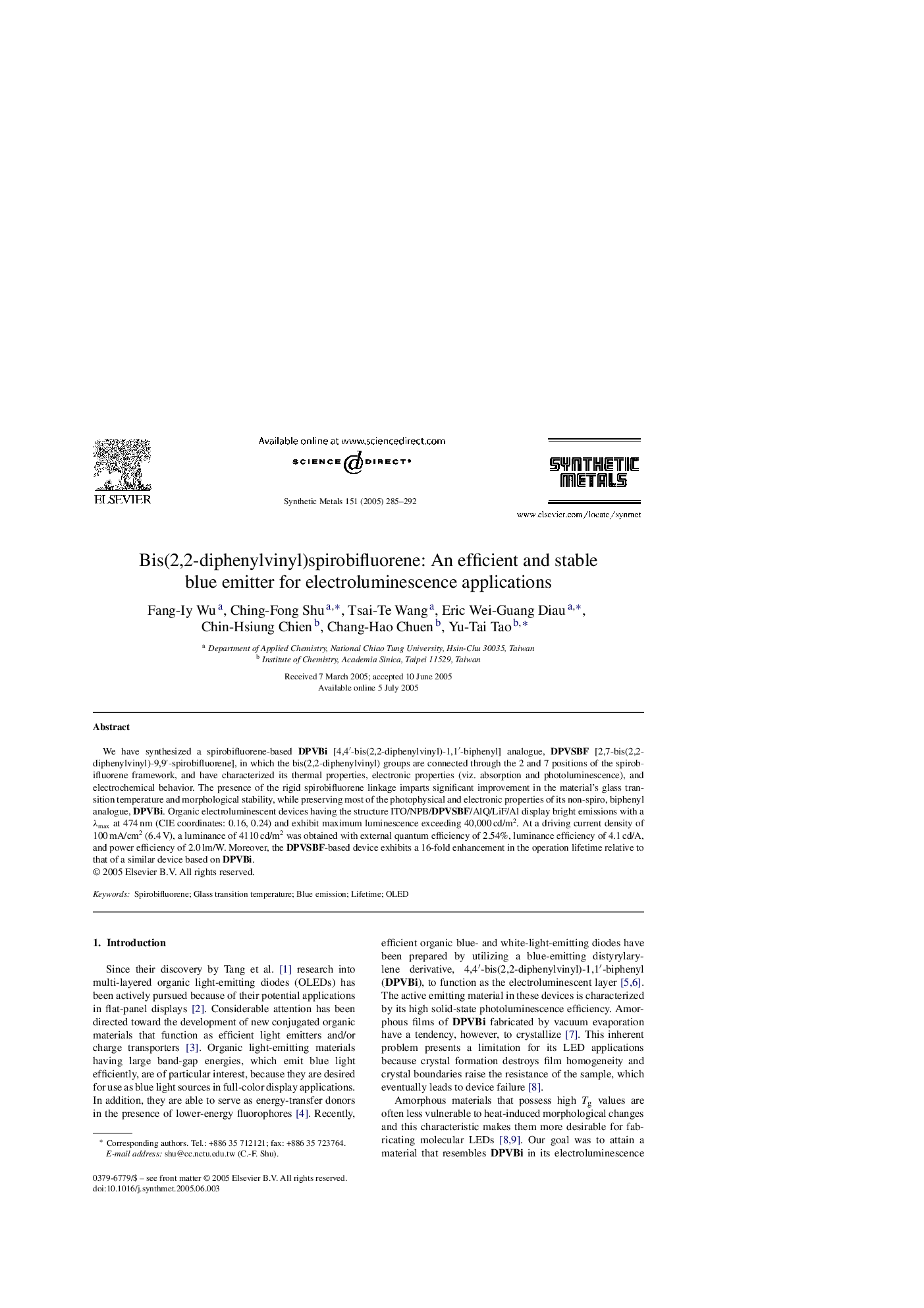| Article ID | Journal | Published Year | Pages | File Type |
|---|---|---|---|---|
| 10619210 | Synthetic Metals | 2005 | 8 Pages |
Abstract
We have synthesized a spirobifluorene-based DPVBi [4,4â²-bis(2,2-diphenylvinyl)-1,1â²-biphenyl] analogue, DPVSBF [2,7-bis(2,2-diphenylvinyl)-9,9â²-spirobifluorene], in which the bis(2,2-diphenylvinyl) groups are connected through the 2 and 7 positions of the spirobifluorene framework, and have characterized its thermal properties, electronic properties (viz. absorption and photoluminescence), and electrochemical behavior. The presence of the rigid spirobifluorene linkage imparts significant improvement in the material's glass transition temperature and morphological stability, while preserving most of the photophysical and electronic properties of its non-spiro, biphenyl analogue, DPVBi. Organic electroluminescent devices having the structure ITO/NPB/DPVSBF/AlQ/LiF/Al display bright emissions with a λmax at 474 nm (CIE coordinates: 0.16, 0.24) and exhibit maximum luminescence exceeding 40,000 cd/m2. At a driving current density of 100 mA/cm2 (6.4 V), a luminance of 4110 cd/m2 was obtained with external quantum efficiency of 2.54%, luminance efficiency of 4.1 cd/A, and power efficiency of 2.0 lm/W. Moreover, the DPVSBF-based device exhibits a 16-fold enhancement in the operation lifetime relative to that of a similar device based on DPVBi.
Related Topics
Physical Sciences and Engineering
Materials Science
Biomaterials
Authors
Fang-Iy Wu, Ching-Fong Shu, Tsai-Te Wang, Eric Wei-Guang Diau, Chin-Hsiung Chien, Chang-Hao Chuen, Yu-Tai Tao,
